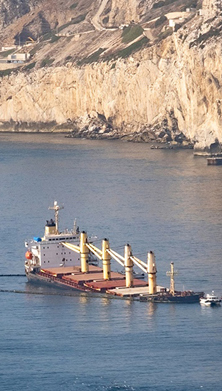The 1 minute dialogue
- Terrorism events have changed from coordinated “direct target” events like 9/11 to “indirect-target” events aimed at creating mass casualties in busy public spaces
- Such incidents can cause significant disruption to businesses located in the vicinity, even if they have not been directly impacted
- Insurers are offering new areas of insurance coverage beyond traditional terrorism insurance such as “denial of access” and “loss of attraction” to address disruptions
- Contingency planning is crucial as it can take months for regular trading levels to return after an event
In the year since the attack that killed 50 people at Orlando’s Pulse nightclub on June 12, 2016 – the US’ worst mass shooting ever– there have been a string of “lone wolf” terrorist incidents throughout Europe against innocent civilians. Different methods of attack have been deployed, but patterns have emerged.
One method has been to drive vehicles into crowds of pedestrians, as occurred in Nice (July 14, 2016: 85 killed, over 200 wounded); at a Christmas market in Berlin (December 19, 2016: 12 killed, more than 60 injured); on London’s Westminster Bridge and Parliament (March 22, 2017: five killed, 50 injured); at a Stockholm pedestrian promenade and department store (April 7, 2017: five killed, over a dozen injured); or on the London Bridge and in Borough Market (June 3, 2017: eight killed and dozens injured).
Another method has been attacks carried out randomly by machete- or knife-wielding attackers, such as during the London Bridge attack, or random shooting attacks, such as when a lone shooter killed a policeman and then fired into a large group of bystanders in Paris (April 20, 2017: two dead and several injured). A third method has been attacks by lone wolf suicide bombers, such as on the St. Petersburg subway (April 3, 2017: 13 killed and dozens injured) and at the Ariana Grande concert in Manchester, England. (May 22, 2017: 22 killed and over 50 injured). Many of the dead and seriously injured in the Manchester attack were teenagers leaving the concert venue.
Such random attacks are unpredictable, difficult to defend against and at the core “irrational”. It is the “new norm”, according to Christof Bentele, Head of Global Crisis Management, AGCS, driven by terrorist groups like Isis (IS), Al-Qaeda, the Islamic Maghreb (AQIM), Al-Shabbab and Boko Haram, to name a few. “Although property targets are still attractive, these groups have declared war on western governments and its citizens,” says Bentele. “They are not out to win the hearts and minds of the people; rather, they are promoting their ideology at all costs by inciting more numerous acts of political violence and terrorism.”
The changing nature of attacks in western cities can cause significant disruption to businesses located in the vicinity of an incident, as well, even if they have not been directly impacted. Given the current environment, so-called non-damage business interruption (NDBI) events are expected to increase in future.
Through June 2016, as a result of the attack on Paris’ Stade de France, the Bataclan concert hall and surrounding areas (November 13, 2015: 130 dead and hundreds injured). France reported a 5.8% decrease in air traffic compared to the same period in 2015. Hotel stays were down 10% in April and May 2016, compared to the same period in 2015.
And along the French Riviera, hotel reservations dropped by as much as 30% in the months following the Nice attacks1. French officials estimate that tourist revenues in Paris were €750m lower in the first half of 2016 than they were in the same period in 20152.
Similarly, after the Westgate shopping mall attack in Nairobi (September 21, 2013: 67 killed, scores wounded) $78m in insured property losses occurred, although the more significant loss was in BI for retailers, as the mall did not reopen until 22 months later, in July of 2015. It is one of the 20 costliest terrorist attacks in history from an insurance perspective3.
Mitigating the cost of non-physical damage BI
Businesses in the vicinity of such attacks will suffer lost revenues, whether or not they incur physical damage for the time the area is cordoned off or until the infrastructure can be repaired to allow entry of customers, vendors and suppliers: an individual business doesn’t have to be a direct victim of a terrorist threat to suffer a loss.
Costs can be enormous – BI losses of almost €30m ($33.6m) per day were estimated by a Belgian business television program, The Free Market, in the aftermath of the March 22, 2016 Brussels attack4 – leading insurers to cautiously offer new areas of insurance coverage beyond traditional terrorism insurance such as “denial of access” and “loss of attraction”.
A denial of access (access/ingress/egress) policy, covers loss sustained during the period of time when ingress to or access from the insured property is prevented. The trigger is physical damage and insurers commonly apply a radius to the impact area to include in the coverage. Policy extensions for aspects like denial of access following an act of terrorism are therefore important coverages to consider, Bentele explains.
“A broader form of BI cover is when there is no physical damage trigger but either a lockdown or a certified threat to a particular area,” explains Bentele. “This can impact a company directly and is one of the most common requests to insurers.”
Meanwhile, loss of attraction or “leader property” claim scenarios may occur where there has been no direct damage against a business’ premises or where there has been no physical damage at all. A BI impact resulting from a physical loss of attraction to a property in the vicinity of the insured’s premises or as a result of a non-damage/threat type event can be quantified. If there is a closure of an important landmark, airport, transport hub or of a particular place where large numbers of people come together (for example, a shopping mall, theme park or nightclub) a reduced number of visitors will result. Industries particularly exposed are retail, hospitality and leisure. Some insurers use forensic accountants to determine whether a business has lost attraction following such an incident.
“A growing number of coverage requests agree to a suitable wording for the cover which suits both parties and the ability to quantify indirect losses,” says Bentele.
Planning for disruption
What should businesses think about when doing contingency planning against unpredictable terror and war risk events? While it is not feasible to assume that
incidents will stop altogether companies should think about bottlenecks in their operation and the business impact if an event occurs.
“Following an act of terrorism or political violence at an insured location, unless a business is able to implement business continuity plans immediately, it can take
months to get back to regular trading levels,” says Adam Posner, Senior Underwriter, Crisis Management North America, AGCS.
“A little planning can help alleviate what could be a fatal exposure. For example, in the US, the government could take an inordinate amount of time to certify an event as ‘terrorism’ under the Terrorism Risk Insurance Program Reauthorization Act (TRIPRA). This could seriously impact a company’s recoverability. Standalone terrorism insurance offers much more responsive bespoke coverage.”
“Despite terrorism schemes that exist in many countries, an extensive commercial terrorism insurance market still exists,” says Bentele, “which is very important for multinational companies spanning several or many jurisdictions. Purchasing a global policy to safeguard against terrorism can be quite complicated, but is vitally important.”
Larger businesses often have insurance and disaster recovery plans to recover quickly after an event. Smaller companies typically do not. It is estimated that fewer than 5% of small businesses have terrorism insurance policies5.
While terrorism can occur anytime and anywhere, any size business can be impacted, either directly or indirectly. Businesses located in large urban areas or certain high-risk countries (or which have suppliers located in such places) should be even more concerned.
Concern should be given to direct vulnerability – type of business, proximity to high risk targets or near busy foot-traffic areas – and the impact of disruption of receipts to the bottom line. Many small companies don’t have sufficient continuity plans in place , but failing to do so can be disastrous.
Terrorism/political violence quick planning tips
- Consider how quickly staff can recover and get back to work following an incident
- Investigate if your company is over-reliant on a particular supplier or customer; avoid aggregation of suppliers
- Think about supply chain vulnerabilities and the possible impact of terrorism or political violence on them and create a contingency plan; this can create a contingent BI (CBI) scenario
- Combine a physical damage (PD) BI all-risks product with terrorism to minimize coverage gaps
Comparing political violence and terrorism insurance – What’s what?
There are various types of insurance available to cover different terrorism or political violence scenarios. Regardless of which type is selected, all terrorism and political violence insurance types include the following main coverages:
- Property coverage: physical damages/losses sustained
- BI/CBI coverage: denial of access due to civil or military authority, supply chain issues, reduction to gross earnings suffered due to the necessary interruption of a business’ operations, and expenses incurred in attempting to reduce loss or increase operations elsewhere
Political violence insurance
- Malicious damage: Physical loss/damage resulting from a malicious act committed for political reasons during a disturbance of the public peace
- Insurrection, revolution and rebellion: Deliberate, organized armed citizen/subject resistance to the laws of a sovereign government
- Coup d’état; mutiny: Sudden, violent, illegal overthrow of a sovereign government; resistance by members of legally armed or peace-keeping forces to a superior officer
- War; civil war: Conflict between two or more sovereign nations, declared or undeclared; a war carried out between or among opposing citizens of the same country or nation
Standalone strike, riot and civil commotion insurance
- Strikes: Any willful act of any striker/locked-out worker during a strike; any act of a lawful authority to suppress or minimize the strike’s consequence
- Riots, civil commotions: Any political act committed in the course of a disturbance of the public peace, by a group of persons; any act of a lawful authority to suppress or minimize the riot
Standalone terrorism and sabotage insurance
- Act of terrorism: An act or series of acts, including the use of force or violence, by any person or group(s) of persons whether acting alone or on behalf of any
organization(s) committed for political, religious or ideological purposes - Sabotage: Any willful physical damage or destruction perpetrated for political reasons by known or unknown person(s)
Note: “Full” political violence insurance would include all of the above. Coverage for any of the above could include physical damage, business interruption, contingent business interruption, denial of access, delay in start up and advanced loss of profit for construction projects.
Download the Global Risk Dialogue
SOURCES
1. French tourism falls victim to terror attacks, Financial Times, July 29, 2016.
2. Insurers look to broaden policies to cover terror attacks, Financial Times, July 22, 2017
3. Insurers adapt coverage to meet evolving terrorist threat, Financial Times, May 15, 2016
4. Davy, P. After Paris. Continuity Insurance & Risk (CIR), 3 May, 2017
5. Financial Times















